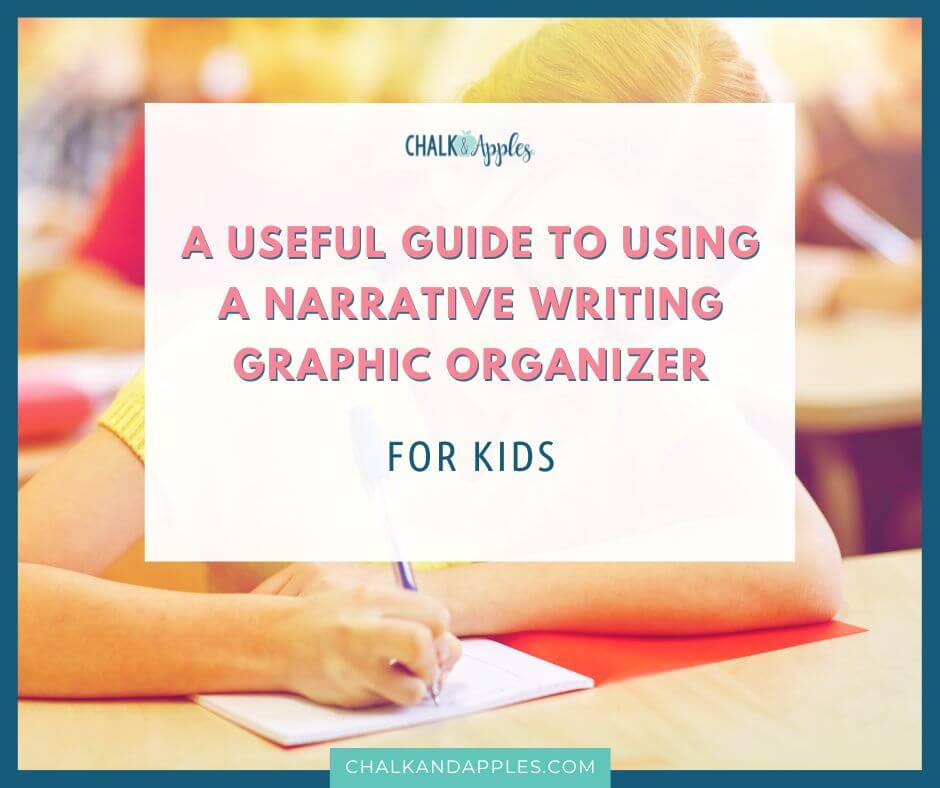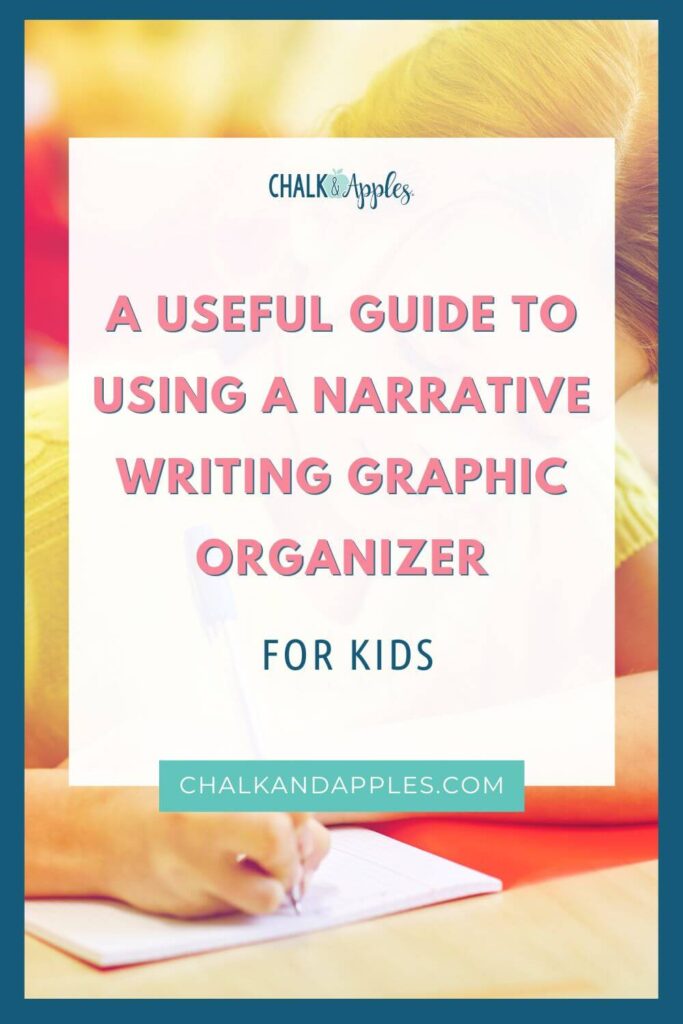Narrative writing is a creative and essential form of expression for students. It allows them to convey their thoughts, emotions, and experiences through storytelling. To help students excel in narrative writing, teachers can introduce graphic organizers as a powerful tool. These visual aids assist students in structuring their ideas, organizing their thoughts, and, ultimately, crafting compelling narratives. Below, you will learn how you, as a teacher, can guide your upper elementary students in creating a narrative writing graphic organizer, including essential elements to add as they draft their organizer and writing piece.
Component Parts of a Narrative Writing Piece
A narrative piece is usually written to tell a story of actual events. Students typically write about trips, experiences, lessons learned, adventures they want to go on, or things they did over the weekend. As they map out their writing, using a narrative writing graphic organizer can help them organize their thoughts. This is typically how a narrative writing piece is formatted:
- Introduction:
- The writer introduces the setting and characters or people involved.
- They provide a hook to grab the reader’s attention.
- The main character’s goal is often displayed.
- Rising Action:
- The writer develops the conflict or problem if there is one.
- The roles of key characters are brought to light.
- Any tension is built up to make the story exciting.
- Climax:
- Students introduce the turning point of the story.
- The reader will find most of the tension or conflict here.
- The moment when the main character makes a crucial decision or faces their biggest challenge is revealed.
- Falling Action:
- The conflict unravels.
- Minor plot points are resolved.
- The writer heads into the conclusion of the story.
- Conclusion:
- The central conflict is resolved.
- The story’s theme or message is reflected upon.
- Some satisfying or conclusive ending is given.
Remember that depending on the grade, some of these elements may be much simpler. As kids age, they become more complex, but the first narrative writing graphic organizer they use will be elementary.
Creating a Narrative Writing Graphic Organizer
- Plot Structure: Start by teaching students about the essential elements of a narrative. These include the introduction, rising action, climax, falling action, and conclusion. Encourage them to add sections for each element in their graphic organizer. This helps students visualize the flow of their story.
- Character Development: Ask students to include sections for character details, such as the protagonist, antagonist, and other main characters. Include spaces for character names, descriptions, and character traits. This will make it easier for them to add as they write their final draft.
- Setting Description: Allocate space for setting details, where students can jot down the time, place, and atmosphere of the story. Encourage them to be descriptive, painting a vivid picture for the reader, even while creating their narrative writing graphic organizer.
- Conflict and Resolution: Help students identify the central conflict in their narrative and a section for how it gets resolved. This will ensure the story has a clear, satisfying conclusion for readers.
- Dialogue: If applicable, suggest adding a section for dialogue. Encourage students to include speech bubbles or quotation marks in their organizer for meaningful character interactions, if there are any.
- Transitions and Sequencing: Teach students to connect their ideas using transition words and phrases. In their graphic organizer, they can include arrows, lines, or connecting words to indicate the sequence of events. They will recognize that those arrows or lines are places they need to use transition words in their final drafts.
- Sensory Details: Remind students to include sensory details in their narratives. Create a section for them to add smells, sounds, tastes, and textures that enhance the reader’s experience.
- Emotions and Thoughts: Encourage students to jot down the emotions and thoughts of their characters at different points in the story. This adds depth to the narrative and makes their writing more interesting to read.
- Title and Illustration: Include spaces for a catchy title and a small illustration. A well-chosen title can give readers a glimpse of the story’s essence, and a simple drawing can add a personal touch. After all, a narrative writing graphic organizer isn’t complete without a title.
Use Fun Narrative Writing Activities to Practice
Before jumping into full narrative writing, try exciting activities that get kids used to this writing style. A Roll and Write Game will encourage their creativity as they make up their stories. It will expand the way they think about story elements.
You can also have your students practice their narrative writing skills by writing weekly narrative pieces with these pre-prepared organizers. Once they start writing their own pieces, have them use the same format to make it easier. These are also available as digital files!
By helping upper elementary students create narrative writing graphic organizers and understand the essential components of a narrative, teachers can empower young writers to develop their storytelling skills. These tools and concepts will guide students in crafting engaging, well-structured narratives that captivate their readers.


